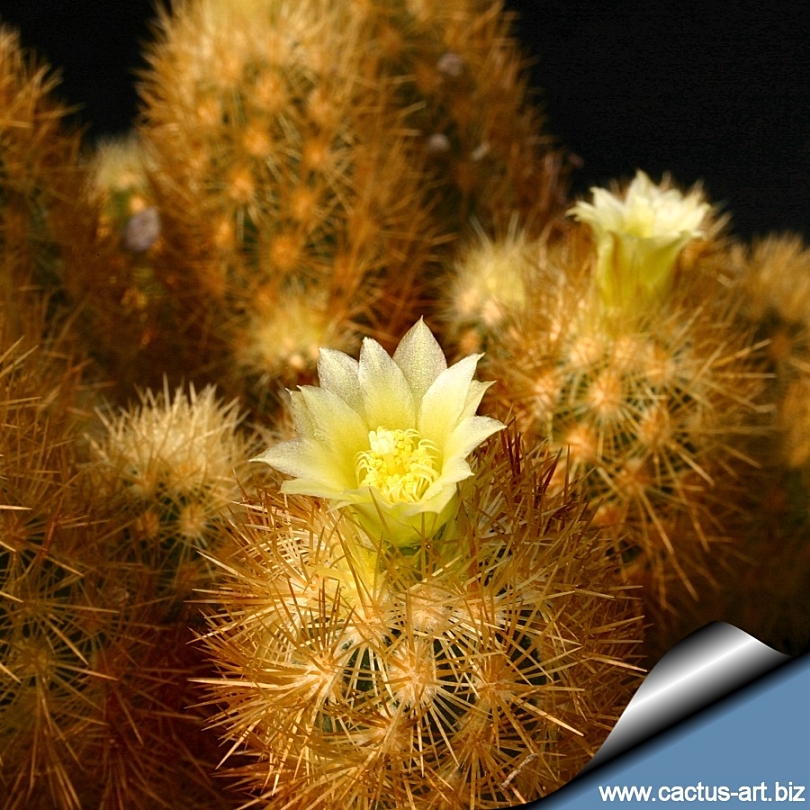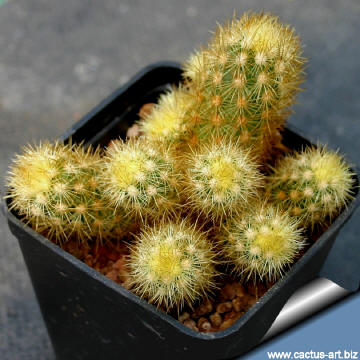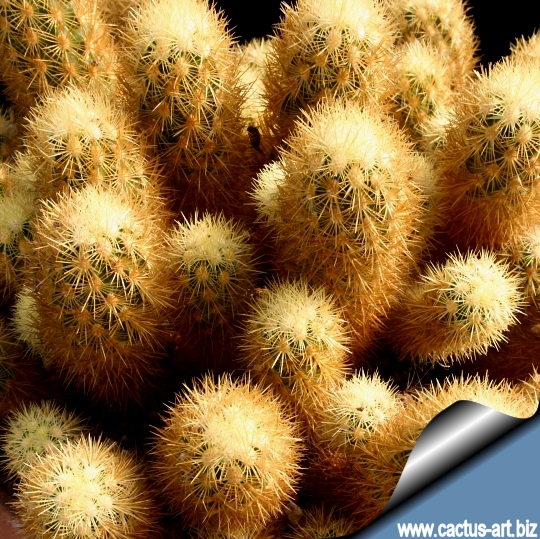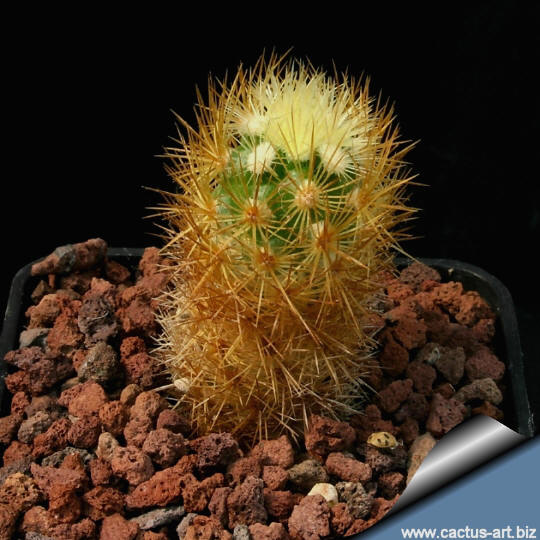|
|
|

Escobaria roseana
(L1187 West of Ascension, Nuevo Leon, Mexico)
The flowers appear at the stem apexes and are yellowish.
|
 |
Description:
Small clustering cactus with many crowded finger-like
stems. Established plants can reach a height of 15 cm and width of 30
cm, with stems.
Stems: Pale green finger sized, initially erect that became
prostrate up to 10 cm tall, 2-2,5 cm in diameter, up to 15 cm long.
Ribs: The ribs have tubercles, with ungrooved areoles.
Spines: 4 to 6 central spines; 15 to 30 radials; rich gold
to dark amber coloured.
Roots: Thick tap root
Flowers: Yellow at the stem tips, small 1 to 2 cm in diameter. |
|
Cultivation:
Because of the tap root they are very rot
prone, so use highly gritty compost with much drainage and water
regularly in summer, but do not overwater, it prefer a completely dry
place during winter. An unheated greenhouse would be perfect. It
can survive low temperatures (appr. -7°C).
Full sun to light shade.
Propagation: Seed or cuttings.

 |
|
Advertising
|
|
|
|
|
|
Family:
Cactaceae (Cactus
Family)
Scientific name: Acharagma
roseanum ssp. galeanense (Haugg)
D.R.Hunt, 2002 |
-
Escobaria roseana ssp.
galeanensis E.Haugg, 1995
- Escobaria roseana var. lauii
|
|
Origin: Type locality: West of Ascension,
Nuevo Leon, Mexico 2650m (Field number L 1187)
Taxonomy: Acharagma
is a genus formed by only two small species of cacti: A. roseana
and A. aguirreana from northern Mexico. This plants
previously classificated as Escobaria are instead related
to Pediocactus and Lophophora, DNA sequence
clearly support the hypothesis that acharagma is a
distinct ‘good’ genus not closely related to Escobaria.
|
|
|
|

This uncommon
cactus, has tiny finger shaped
stems and will slowly form small
clusters with dense golden spines.
Spines are gold-amber coloured. |
|

|
|